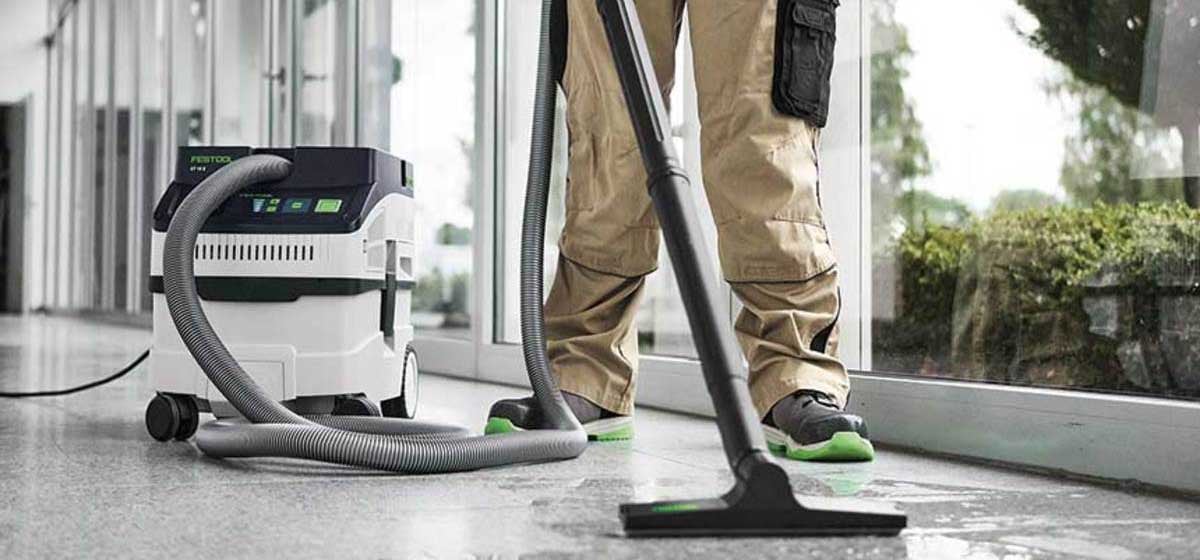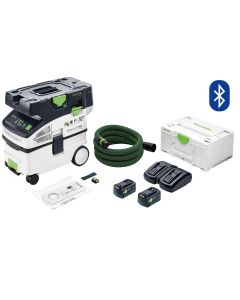
Unleash the power
Trade workshops are a whirlwind of tools, materials, and dust. That's why dust extractors are a critical part of any tradesperson’s or DIYer's arsenal. They have a wide range of uses, ensuring a cleaner, healthier, and more efficient workspace. Dust can significantly impact the longevity of power tools and affect the health of those working in the environment. For these reasons, Festool recommends using a dust extractor when operating tools that produce dust and debris. Let's explore these multi-purpose solutions and the versatility of dust extractors in various trade applications.
SAFER SANDING
Sanders produce a lot of fine particulate dust, which is why dust extractors are an essential accessory for sanders. Whether you are using an orbital, belt, drywall, air, or sheet sander, attaching a dust extractor to the outlet minimises airborne particles for a safer work environment and improved visibility. This helps to achieve a smoother finish with minimal mess.
CAPTURE DUST AT THE SOURCE WITH SAWS
All saws produce a lot of dust. Circular, plunge cut, table saws, and mitre saws are all easier and safer to use when attached to a dust extractor. In addition to ensuring a safer workspace, dust extractors improve the longevity of saws by minimising the build-up of dust in the components. Dust is abrasive and can clog the air vents, which leads to wear and tear on your treasured power tools. Dust extractors are also critical to improve visibility, ensuring cleaner, more precise cuts.


PRECISION OPERATION WITH ROUTERS
Dust extractors can be connected to routers, too. Without plumes of dust and debris, router operation is more precise. Dust extractors ensure a clear line of sight and prevent dust from settling into freshly carved grooves to produce a smoother finish. Routers are ideal for detailed woodworking, so optimising their performance is essential.
PERFECT PLANING
Planing is the process of smoothing and shaping wood. Planers produce a fair amount of shavings and dust, making dust extractors essential. By capturing shavings at the source and preventing them from interfering with the process, planing is smoother and more precise.






DUST FREE GRINDING
Grinding concrete produces a lot of hazardous dust, which is why dust extractors are critical when operating grinders. Along with improving visibility, dust extractors prevent abrasive particles from settling on the grinder and reduce the amount of inhalable dust. As with other forms of dust, dust from concrete can impair lung function, and long-term exposure can result in COPD, various forms of cancer, and more.
WET AND DRY APPLICATIONS
These days, dust extractors are equipped to handle both wet and dry applications. This added versatility makes them invaluable in cleaning up liquid spills or mixed debris. In these instances, the dust extractor is disconnected from the power tool and connected to a vacuum cleaner attachment to suck up the mess. Unlike ordinary wet and dry vacuum cleaners, a dust extractor is more efficient and traps more of the fine particulate to produce a cleaner, safer working environment.
There’s no arguing about how versatile dust extractors are. These multi-purpose machines are the key to a safer, cleaner, more efficient workshop. Compatible with a wide range of power tools, dust extractors can significantly improve the standard of work produced in trade workshops.










